Solar Living Institute
Hopland, California, USA
October 2006 – January 2007

November 4, 2015
The Solar Living Institute (SLI) is a nonprofit promoting sustainable living through inspirational environmental education on its 12-acre demonstration site in Mendocino County.
My take
The SLI (we called it either the SLI or “the sly”) was my first taste of alternative living. My hippie 101. It was the first time I met people who homeschooled their kids on the road, people who chose not to go to college and people who questioned the use of vaccinations. Mind you, I was entirely ignorant of such possibilities!
How I found it
When my application to the Peace Corps fell through sometime in my last year of college, I got on the internet and googled a bunch of keywords including the word “sustainability.” The Solar Living Institute showed up in the search results. Click. The website made it seem like a good place to start a career in the solar energy industry (turns out it was)… but little did I know that the environmental education nonprofit was also a mini hippie commune. (I use the word commune loosely in this article. Though we interns didn’t own the property, we shared the farm and garden, buildings, decisions and pooled together our meager stipends.)
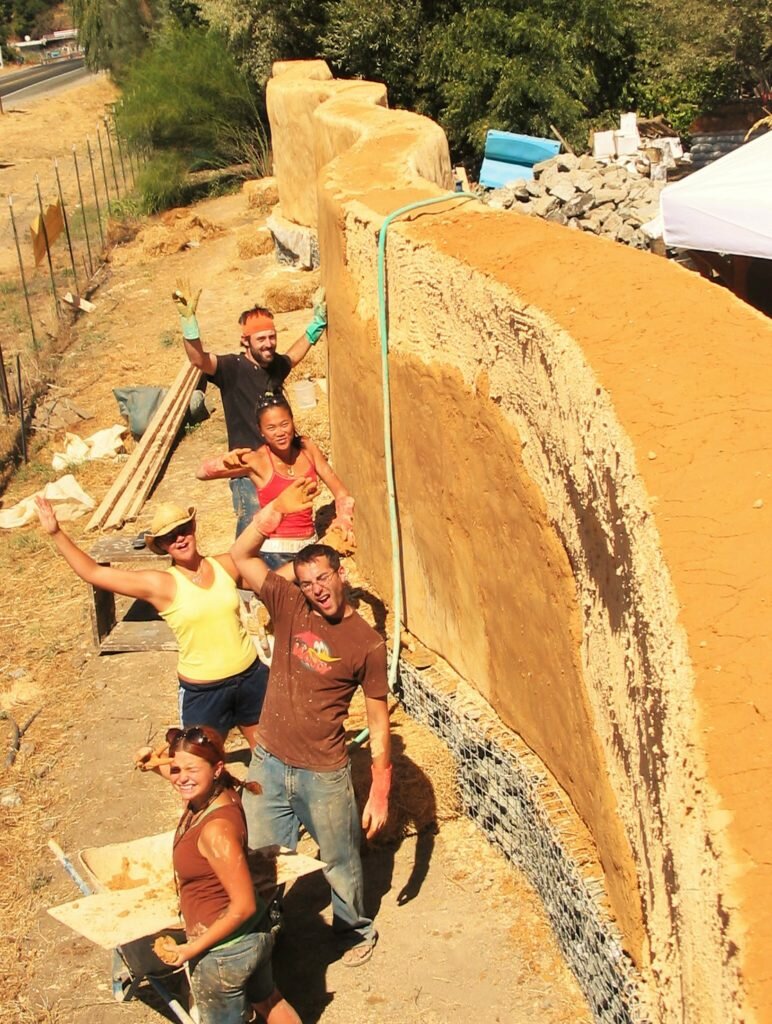
Interns constructing the straw bale “Great Wall of Hopland”
The big, colorful, cardboard frogs that welcomed me along the driveway were a hint! I went there for a 4-month internship in October 2006, right after I finished college. By day a workplace and education center, by night a commune made up of interns who came to live there on a rotating basis for 3-6 months at a time. While I was there, the size of the community fluctuated between 4-20 interns and volunteers who lived on site plus about 10-20 SLI and Real Goods staff who worked there during the day.
A brief history

Solar Living Center entrance at SolFest 2008
The Solar Living Center, the site hosting the SLI and Real Goods, is only 2 hours (driving) north of San Francisco, in Mendocino County’s famous marijuana country and less famous wine country. John Schaeffer, a product of UC Berkeley and the 1970’s back-to-the-land movement, purchased the land and started building on it in 1995. Now the SLI is complete with different types of solar energy systems, natural buildings including the Real Goods Store and office, a very picnicable pond, a permaculture kitchen garden and a small organic farm. It is a beautiful oasis. Formerly a CalTrans dump site for highway rubble, a few cars from the 1950’s and 60’s are still there, with huge trees growing right through them.
What I got to do and learn
Formally, I was an education intern whose role was to set up the classroom and make coffee for weekend workshops on topics like “how to design an off-grid solar electric system” and “beekeeping 101.” I got to sit in on most of the workshops. I also got to garden, cook, give tours and live in a communal setting for the first time.
But the real focus of our time there was natural building. The previous year, the intern dome had flooded and burned down (due to a gas line that disconnected itself when the dome tried to float away!). So we started the rebuilding of the intern village on higher ground while we lived in tents. Massey Burke, an excellent human being and teacher, was our natural building instructor for most of the projects. We built a papercrete foundation and erected a small bedroom yurt, built an earthen rocket stove mass heater inside the kitchen yurt, added cabinetry and tile countertops inside the kitchen, and started what would become the most luxurious cob shower house I have seen to this day.
I learned so much through hands-on work. We also learned from our mistakes. When I went back to visit a year later, the rocket stove mass heater had been torn out because too much of the smoke was coming out of the combustion chamber (inside) instead of the flue (outside). We suspected that the pipe that carries away the smoke, around which the butt-warming bench built, was too long.
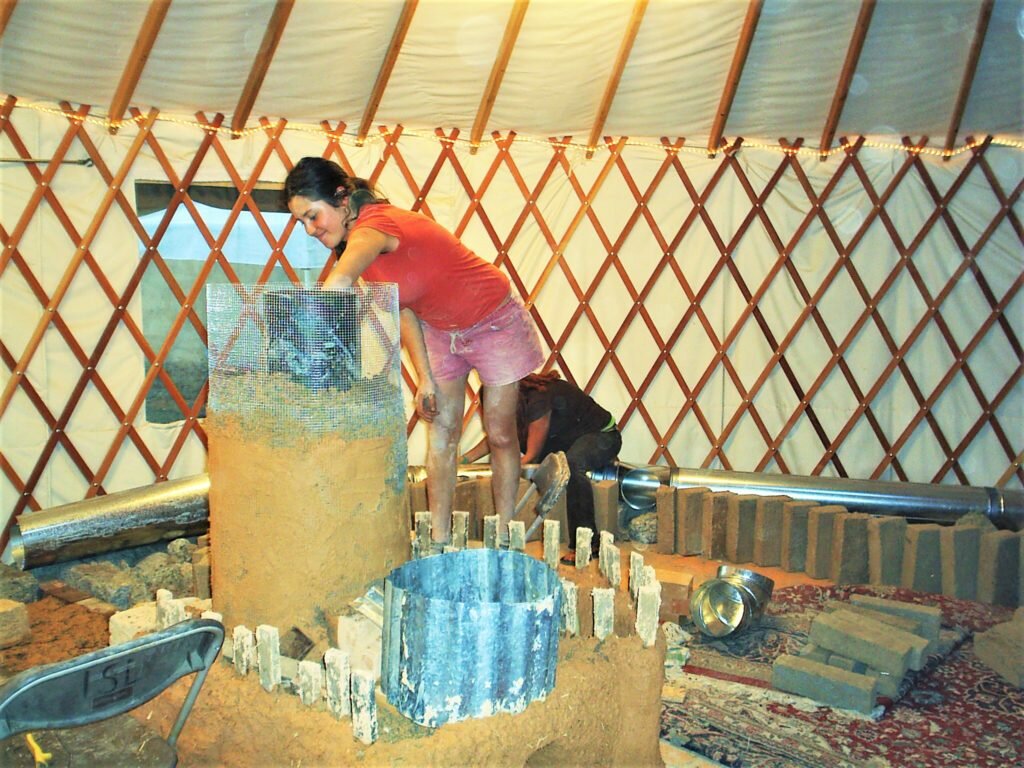
Interns constructing a rocket mass heater
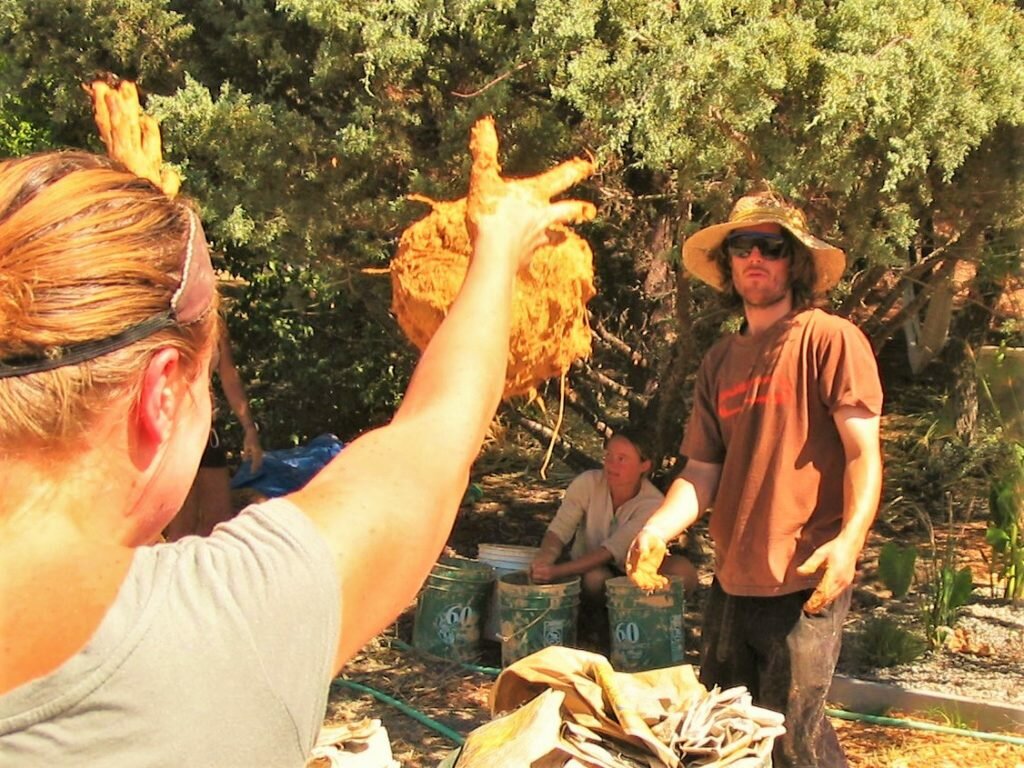
Cob Hadoken!
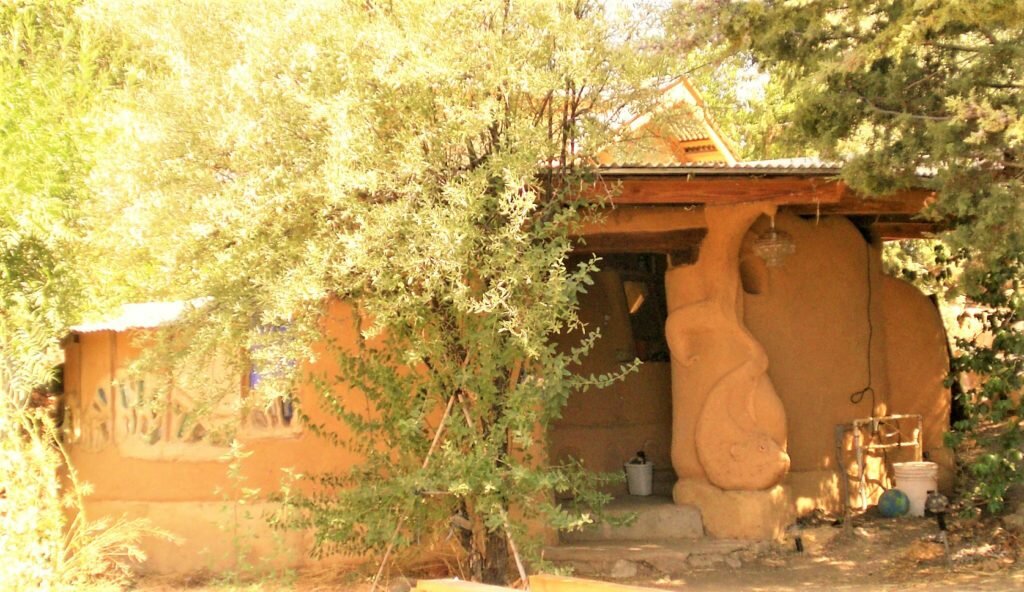
Cob showerhouse in 2008
Though each intern’s formal responsibilities were governed by the SLI staff, to a large extent, we got to make our own decisions. For example, we decided how many hours we wanted to work in general, how structured we wanted work timings to be and whether to accept each guest or volunteer that wanted to stay overnight or longer. Rules and agreements (and disagreements) changed as interns came and went. In such a shifting environment, I learned that having a little bit of structure really helped… a chore wheel and weekly meetings to talk about any issues that came up were simple yet incredibly helpful tools.
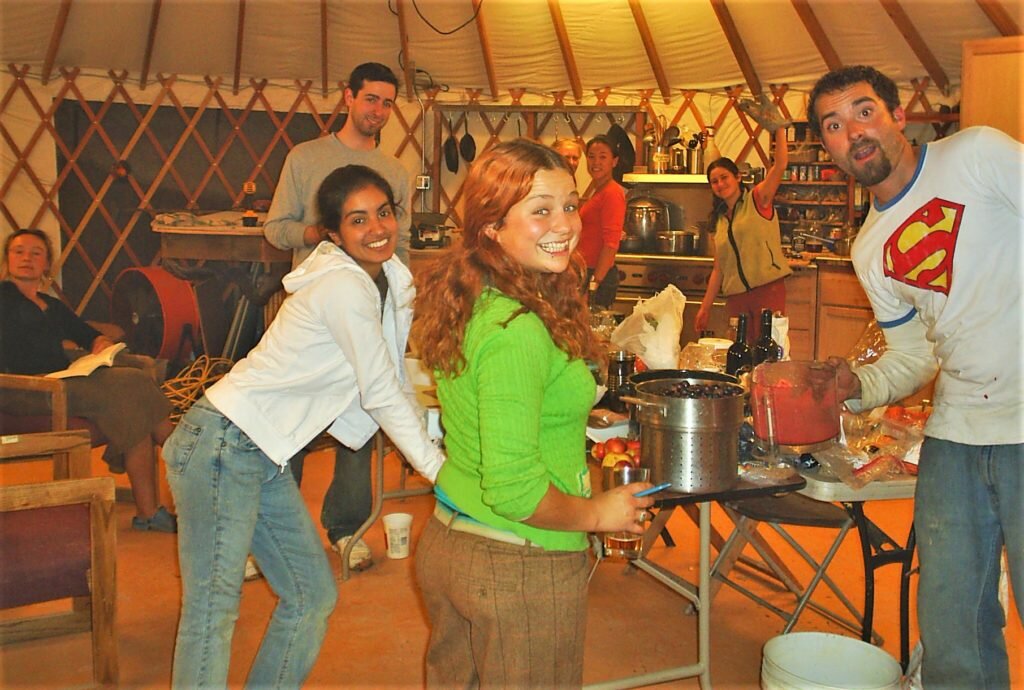
Interns in the kitchen/living room yurt
Looking back, I am surprised by how little conflict emerged and how easy it was to make decisions together, compared to other communities. This ease (or at least the perception of ease) could be attributed to my own naivete, the transience of the interns and volunteers, our shared goal of learning about sustainable living, and perhaps a general feeling of happiness because we were in a beautiful place already set by a positive tone.
Of course, no commune would be complete without bonfires, music jams, parties and lots of delicious home-grown food…
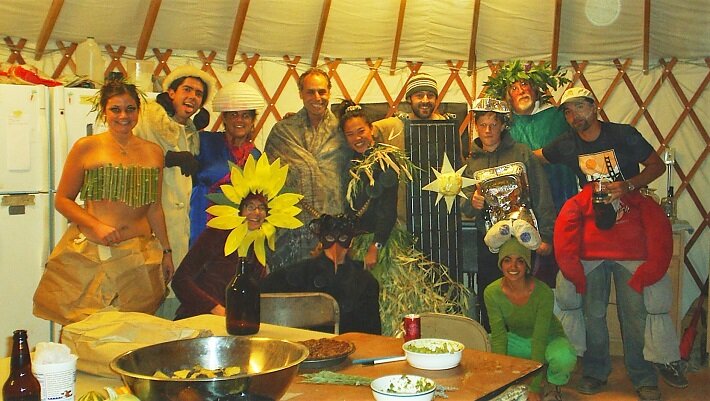
Halloween party
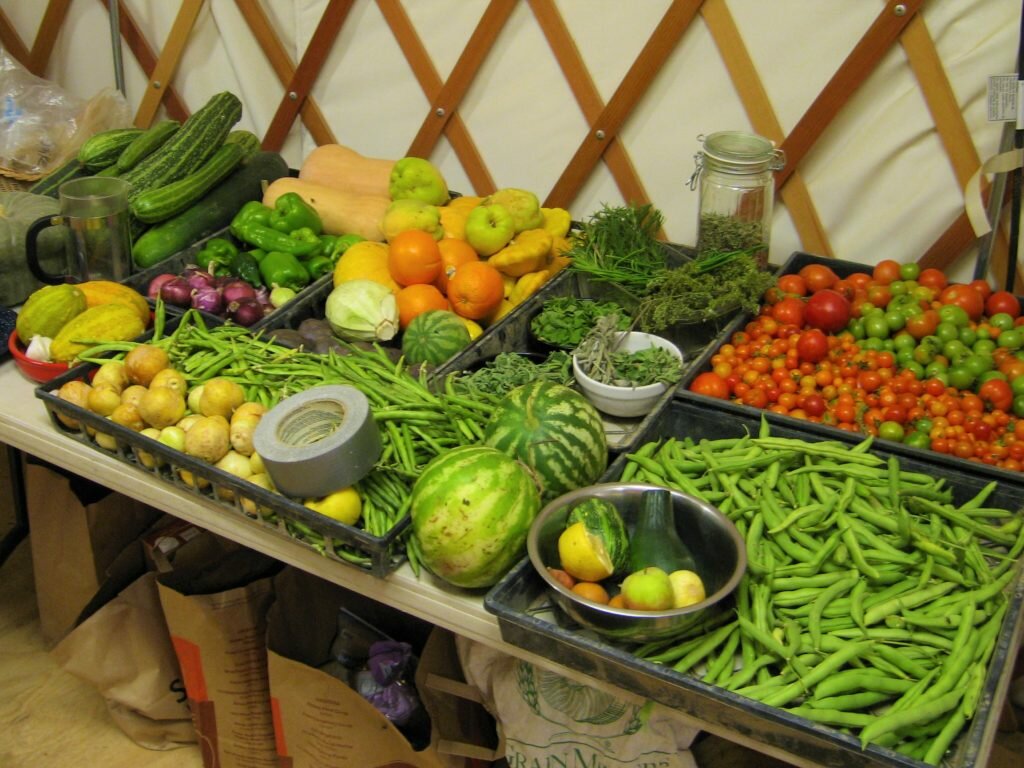
Farm and garden harvest
Even though I was a novice to intentional community and natural building at the time, I think I would learn a lot if I went back now, after 6 years on-and-off in communities. I wholeheartedly recommend the SLI experience.
Visit
The easiest way to visit is to take one of the free scheduled tours Friday-Sunday 11am and 3pm. The tours are given by interns, so the quality of your tour will highly depend on who does it. Another option is to attend SolFest, their big annual celebration and sustainable living expo, if they are still doing it. You can attend for a suggested donation or volunteer in exchange for entry and food.
Intern or volunteer
If you’re looking for a more in-depth experience, you can apply for an internship or ask to volunteer for however much time you have. I particularly recommend going in the summer (June-September) or “Indian summer” (October-early November), Indian summer referring to the delayed summer in much of California. Around mid-November, the community became a lot smaller and less active as the weather got colder and rainier.
For interns, accommodations were in tents in the summer and shared yurts in the winter, though I imagine they are much better now. You probably will not find much privacy unless you bring your own tent. In some respects, you might still be roughing it. I remember not showering for over a week when the shower pipes froze and burst!
We were each given a $25 per week stipend for groceries, which we put in a common jar and decided together how to use. I know it doesn’t seem like much, but the stipend was more than enough, as we grew a lot of veggies, received gifts of apples and pears from SLI employees who had orchards and got leftover food supplies from SLI workshops and festivals. The communal food was vegan friendly and mostly vegetarian.